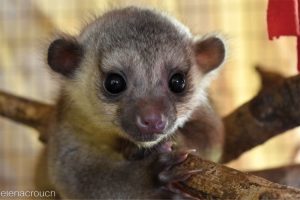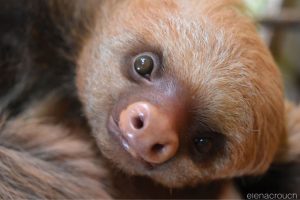Reforestation & Monkey Bridges

By Elena Crouch
Social Media intern, Student of Northeastern University
For an organization that in 2015 alone, has rescued over 218 animals and planted over 7,000 trees since they began, it’s hard to believe the modest roots of Kids Saving the Rainforest (KSTR). KSTR was started over seventeen years ago by two nine-year old girls whose mothers lived in Manuel Antonio. The two girls, Janine and Aislin, were witnessing the steady destruction of the rainforest in their backyard and decided to create their own organization and make a change. KSTR began as a reforestation organization, and has since grown tremendously and has developed into four main projects: reforestation, the monkey bridge program, the KSTR Wildlife Sanctuary, and the KSTR Wildlife Rescue Clinic.
Through reforestation, KSTR works to re-establish rainforest in areas that have previously been depleted. Since KSTR began, they have planted over 7,000 trees in the Manuel Antonio area, and they planted over 200 trees in the “boot camp” area of their property last year. They are currently working on a project where they will donate 418 acres in Parrita to reforest 45,000 trees. By planting native trees, KSTR is not only helping to save some endangered plant species, but they are also helping to extend a biological corridor that will expand food and shelter options for the endangered squirrel monkey.

The endangered squirrel monkey, also referred to as the grey-crowned squirrel monkey, is found exclusively in the Manuel Antonio area, and has been a huge motivator for KSTR to reforest and decrease the human-imposed risks on the species. This is where the monkey bridge project is most relevant. KSTR works hand in hand with ICE, the electric company in the area, to put ropes up across roads to provide an alternative pathway for animals, specifically the squirrel monkeys, to cross safely. Electrocutions are a major risk and issue when it comes to animals trying to make it across the roads in the more developed areas of Manuel Antonio. So far, KSTR has placed over 130 monkey bridges in the area, and has seen over thirteen animal species using the bridges including but not limited to: two-toed sloths, kinkajous, porcupines, white-faced monkeys, and opossums.
When animals are electrocuted, confiscated, injured, orphaned, or sick, they come to KSTR’s Wildlife Rescue Clinic. In this clinic, KSTR has a full-time vet as well as a vet-tech that work to provide the best treatment and care for all different kinds of wildlife that come in. In 2016 alone, 52 animals have already come through the rescue clinic. Screech owls, pygmy owls, opossums, three-toed sloths, two-toed sloths, white-faced monkeys, porcupines, and kinkajous are just a few!
For the animals that cannot be released back into the wild, KSTR has developed and created a wildlife sanctuary. In this sanctuary, KSTR biologists try to mimic the natural environment and diets of the animal residents. Ranging from Brazilian marmosets, donated by a researcher, to the endangered grey-crowned squirrel monkey, there are quite a variety of animals here. KSTR provides tours of their wildlife sanctuary for anyone interested in learning more about the organization, animals, or reforestation every morning except for Tuesdays.
Kids Saving the Rainforest has grown such an immense amount from the two nine-year old girls who would sell hand painted rocks on the side of the road. If you’re interested in helping KSTR on any of their projects, there are a wide variety of volunteer opportunities where you can get hands on experience. Check out their website for more information on how you can help: www.kstr.org.


Dear Sir,
I am trying to start a similar project in Panama to save the Azeuro Howler Moneky.
I am interested in any respurces or help you can give in reforestation and monkey bridges.
Regards
Moke